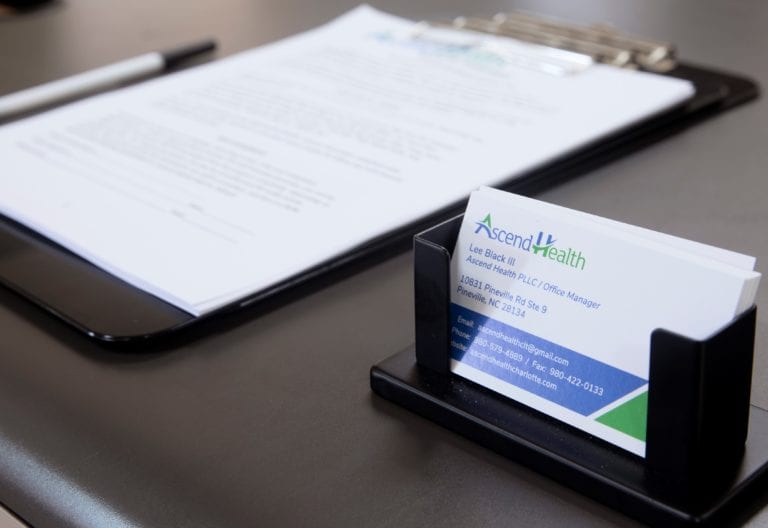Understanding telehealth treatment
Telehealth opioid treatment with Suboxone can transform your recovery journey by combining medication-assisted therapy with the convenience of virtual care. When you access remote Suboxone services, you gain stability without the barriers of travel or scheduling conflicts.
What is telehealth Suboxone therapy?
Telemedicine-delivered medication-assisted treatment (MAT) uses secure video calls and messaging to connect you with licensed clinicians. Through this model, you receive Suboxone, an FDA-approved combination of buprenorphine and naloxone, to manage cravings and reduce withdrawal symptoms in the comfort of your home.
Medication-assisted treatment fundamentals
- Buprenorphine, a partial opioid agonist, eases withdrawal without producing intense intoxication
- Naloxone, an opioid antagonist, deters misuse by precipitating withdrawal if the drug is injected or snorted
- A clinician oversees your induction, dosage adjustments, and regular follow-ups
An FDA-approved formulation combines buprenorphine with naloxone to maximize safety and effectiveness [1].
Benefits of remote access
- Increased privacy and comfort
- Flexible scheduling around work, family, or school
- Reduced travel time and expenses
As a result, many find that virtual Suboxone care fits seamlessly into daily routines.
Role of Suboxone in recovery
Suboxone stabilizes brain chemistry, allowing you to focus on therapy and life changes rather than acute withdrawal.
Buprenorphine and naloxone combo
- Buprenorphine minimizes cravings without full opioid effects
- Naloxone ensures proper administration
Reducing cravings and withdrawal
Your plan typically begins after 12–24 hours of abstinence from full opioids to clear your system. Once inducted, steady dosing can:
- Eliminate intense cravings
- Prevent withdrawal symptoms
- Promote overall stability in early recovery
Exploring aftercare continuum
After detox or inpatient rehab, an outpatient aftercare plan helps you maintain progress and prevent relapse. Ascend Health’s structured continuum emphasizes Suboxone maintenance, therapy, and support.
Outpatient Suboxone maintenance
Stable access to Suboxone keeps you engaged in treatment and minimizes risk of returning to opioid use. By enrolling in a suboxone maintenance therapy outpatient program, you can:
- Attend virtual check-ins with a clinician
- Receive ongoing dosage adjustments
- Access peer support and counseling resources
Relapse prevention therapy
Long-term success depends on coping skills as well as medication. Relapse prevention includes:
- Cognitive behavioral therapy to reframe triggers
- Group sessions for shared experiences
- Workshops on stress management
Consider our relapse prevention MAT treatment for integrated support.
Comprehensive MAT programs
A holistic program delivers:
- Medication guidance and monitoring
- Individual and group counseling
- Family involvement
- Case management
Our aftercare Suboxone treatment program ensures you have the support necessary for lasting recovery.
Telehealth program advantages
Virtual Suboxone care offers measurable benefits compared to traditional in-person models.
Increased treatment retention
Studies demonstrate that starting buprenorphine via telehealth often leads to higher retention:
- In Kentucky, 48% of patients stayed in treatment for 90 days through telehealth versus 44% in person [2].
- In Ohio, 32% remained via telehealth compared to 28% with clinic-based starts [2].
Convenience and accessibility
- Patients reported saving an average of 6.5 miles and 10 minutes per visit [3].
- Virtual appointments break down geographic barriers, especially in rural areas.
- Flexible scheduling reduces missed visits due to work or childcare conflicts.
Personalized care in supportive environment
Your treatment adapts to your needs:
- Regular check-ins via secure video
- Swift dose adjustments
- Coordination with therapy or case management
Explore our telehealth Suboxone maintenance program for a fully remote continuum.
Expectations for your treatment
Understanding each step of your telehealth Suboxone journey builds confidence and reduces uncertainty.
Initial assessment and induction
- A clinician reviews your medical history and current status.
- You undergo a virtual evaluation to confirm opioid dependence and readiness.
- An induction plan outlines your initial dosing schedule, often with the first dose supervised remotely.
Ongoing monitoring and support
- Weekly or biweekly telehealth visits track progress.
- Periodic lab screenings verify compliance and safety.
- Clinicians collaborate with therapists or peer specialists.
Coordinating with family therapy
Involving loved ones enhances recovery. Family sessions:
- Improve communication
- Strengthen support networks
- Address codependency
Consider adding our outpatient MAT with family therapy for comprehensive care.
Coverage and affordability
Navigating insurance ensures uninterrupted treatment access.
Insurance and Medicaid options
Many plans cover Suboxone and telehealth visits. You may qualify for:
- Private insurance benefits
- Medicaid coverage for low-income individuals
- State Opioid Response funding for young adult services [4]
If you rely on Medicaid, see our outpatient opioid program that takes Medicaid.
Ascend Health’s covered MAT programs
We partner with insurers to reduce out-of-pocket costs. Covered services include:
- Suboxone prescriptions and telehealth consults
- Lab work and routine screenings
- Counseling and case management
If you prefer injectable options, ask about Sublocade treatment with insurance coverage.
Getting started with Ascend Health
Enrollment in a telehealth Suboxone program is simple.
How to enroll
- Complete a brief online intake form.
- Schedule your initial telehealth consultation.
- Submit required documents, such as consent and insurance information.
Preparing for your first session
- Ensure a private, quiet space with reliable internet.
- Gather medical records and a list of current medications.
- Have questions ready about dosing and program structure.
Once you’re prepared, your provider can focus on crafting an individualized plan.
Monitoring progress and outcomes
Tracking your milestones keeps you motivated and accountable.
Key metrics and milestones
- Retention at 30, 60, and 90 days
- Frequency of cravings and withdrawal episodes
- Engagement in counseling and peer groups
| Metric | Telehealth result | In-person result |
|---|---|---|
| 90-day retention in KY | 48% [2] | 44% [2] |
| 90-day retention in OH | 32% [2] | 28% [2] |
| Opioid use reduction | 32.8% at 3 months [3] | N/A |
Telehealth versus in-person comparison
Telehealth
- Flexible scheduling
- Lower travel burden
- Comparable safety and outcomes
In-person
- Face-to-face interaction
- Immediate access to on-site labs
Overall, virtual MAT holds its own in effectiveness while expanding reach.
Taking the next step
By integrating Suboxone, therapy, and ongoing support into your daily life, you benefit from a tailored treatment program that adapts to your unique needs. Ascend Health is committed to guiding you from induction through long-term relapse prevention.
Reach out today to learn how our suboxone outpatient recovery program or outpatient opioid rehab with Suboxone can help you sustain momentum and build a stronger foundation for lasting recovery.



